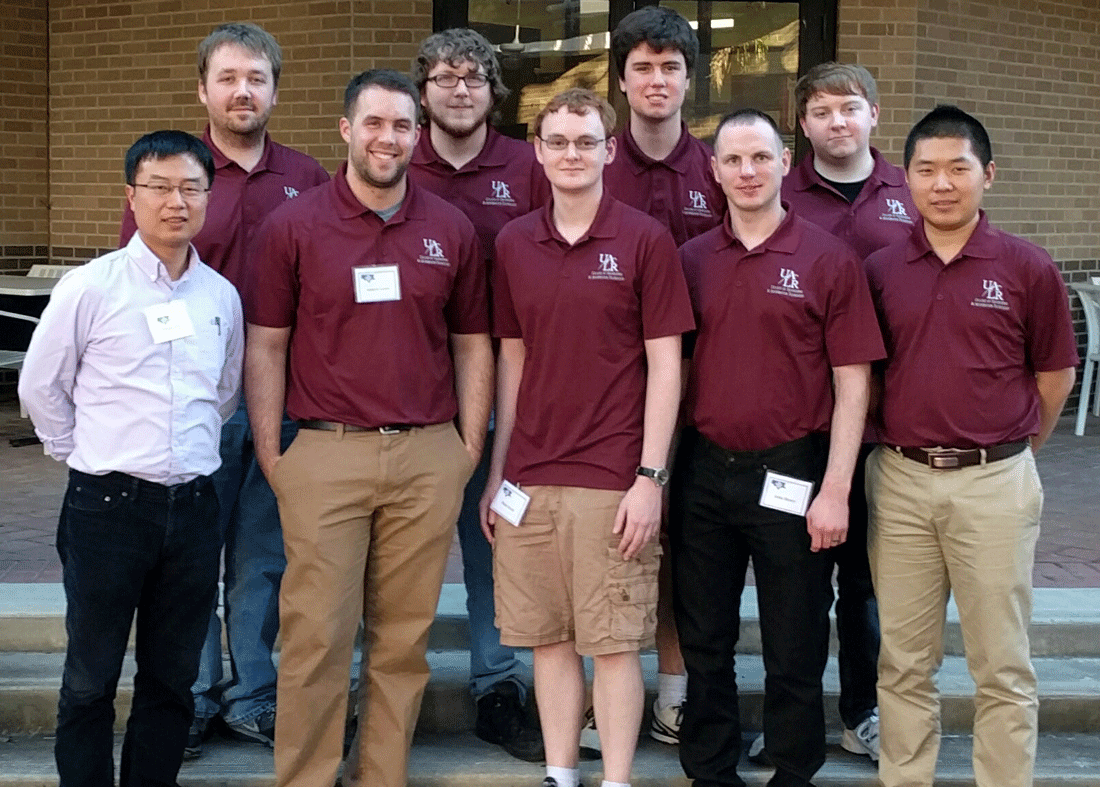UALR team takes third place in Cyber Defense Competition
The University of Arkansas at Little Rock Cyber Security Club recently earned the highest finish ever for an Arkansas university at the Southwest Collegiate Cyber Defense Competition.
UALR’s Cyber Security Club team, comprised of captain Andrew Lewis as well as Blaise Koch, Connor Young, Dylan Hailey, Jeffery Wooldridge, John Henry, Tommy Haycraft, and Yanyan Li, finished third in the March 12-13 competition at Texas A&M University-San Antonio.
The team initially competed in a virtual qualifier with 22 other squads and was one of eight that advanced to the regional competition. During the regional event, participants spent two days simulating an information technology department at an imaginary health insurance company called Insuracomm.
Each team was assigned a room with six computers and charged with tasks like running the company website, setting up an email server, developing social media policies, and handling information technology requests. However, their assignments got more complicated as professional testers constantly tried to sabotage their efforts.
“We were asked to keep a bunch of industry services up and running, and that in itself is very difficult,” Koch said. “Professional penetration testers were tasked with bringing our services down. Think of them as legal hackers. They are the ones companies pay to find holes in their security before the bad guys do.”
Mengjun Xie, faculty advisor of the Cyber Security Club, said the competition demonstrates to students how their cyber security skills can be used in the real world.
“Everything is online. Data often becomes the most valuable asset for most companies, universities, and all types of organizations,” Xie said. “Once the students participate in this competition, they have a very strong motivation to learn. This national competition attracts so much attention.”
One of the real-world problems the team had to investigate was the company’s vulnerability to an attack similar to what happened to Ashley Madison, the online dating website for married people that was hacked in 2015. Since the competition’s fake insurance company deals with health insurance, the team had to follow strict national laws that protect personal health information.
“Every competition I have gone to you face a challenge in modern-day security,” Lewis said. “You never know what you will get with these competitions. Sometimes we build an entire network and then defend it against hackers. It is always changing. The idea is to learn about modern vulnerability and security issues. Everyone knows what happened at Ashley Madison. One of our assignments was to see if our website was vulnerable to the Ashley Madison attacks.”
The College of Engineering and Information Technology and the Department of Computer Science sponsored the Cyber Security Club’s trip to the competition.
Dr. Kenji Yoshigoe, chair of the UALR Department of Computer Science, noted a team from the university first competed in a regional qualifier merely three years ago.
“Since then, the team has come a long way and became one of the dominating teams in the Southwest region,” Yoshigoe said. “On behalf of the Computer Science Department, I would like to congratulate them on their great accomplishment.”
In the upper right photo, pictured in the front row, from left to right, are Mengjun Xie, Andrew Lewis, Blaise Koch, John Henry, and Yanyan Li. Pictured in the back row, from left to right, are Tommy Haycraft, Connor Young, Jeffery Wooldridge, and Dylan Hailey.
